Akshay Joshi
NN-EUCLID: deep-learning hyperelasticity without stress data
May 04, 2022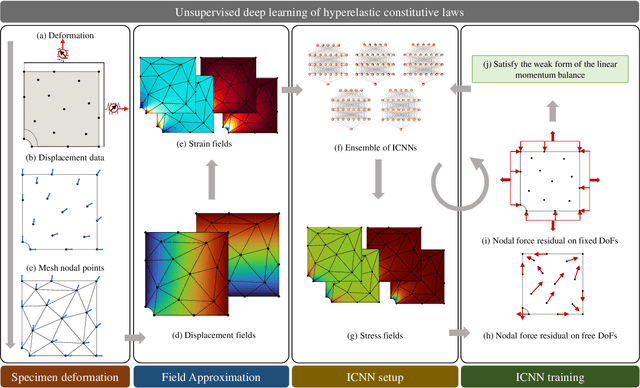
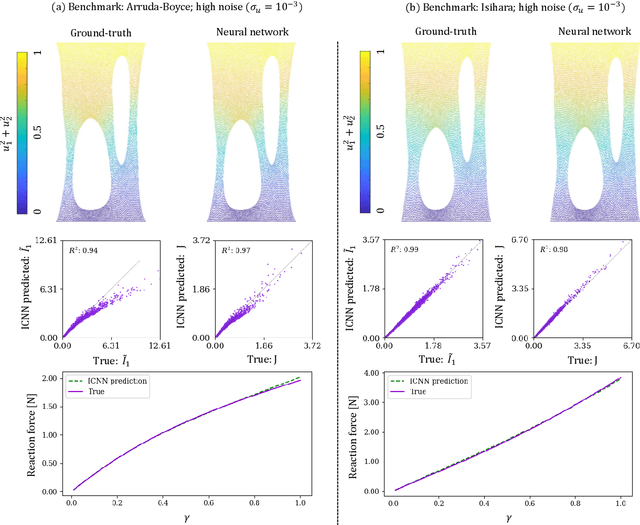

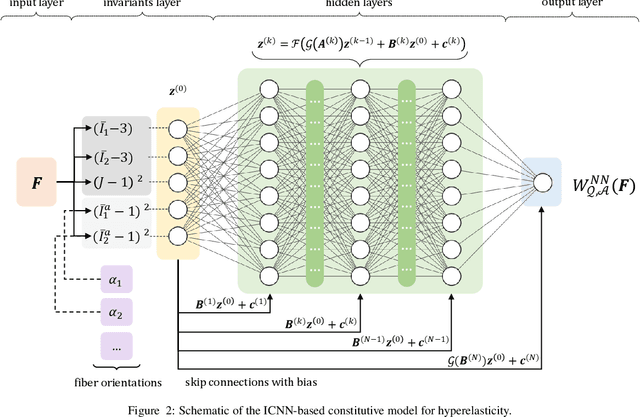
Abstract:We propose a new approach for unsupervised learning of hyperelastic constitutive laws with physics-consistent deep neural networks. In contrast to supervised learning, which assumes the availability of stress-strain pairs, the approach only uses realistically measurable full-field displacement and global reaction force data, thus it lies within the scope of our recent framework for Efficient Unsupervised Constitutive Law Identification and Discovery (EUCLID) and we denote it as NN-EUCLID. The absence of stress labels is compensated for by leveraging a physics-motivated loss function based on the conservation of linear momentum to guide the learning process. The constitutive model is based on input-convex neural networks, which are capable of learning a function that is convex with respect to its inputs. By employing a specially designed neural network architecture, multiple physical and thermodynamic constraints for hyperelastic constitutive laws, such as material frame indifference, (poly-)convexity, and stress-free reference configuration are automatically satisfied. We demonstrate the ability of the approach to accurately learn several hidden isotropic and anisotropic hyperelastic constitutive laws - including e.g., Mooney-Rivlin, Arruda-Boyce, Ogden, and Holzapfel models - without using stress data. For anisotropic hyperelasticity, the unknown anisotropic fiber directions are automatically discovered jointly with the constitutive model. The neural network-based constitutive models show good generalization capability beyond the strain states observed during training and are readily deployable in a general finite element framework for simulating complex mechanical boundary value problems with good accuracy.
Time Efficient Training of Progressive Generative Adversarial Network using Depthwise Separable Convolution and Super Resolution Generative Adversarial Network
Feb 24, 2022



Abstract:Generative Adversarial Networks have been employed successfully to generate high-resolution augmented images of size 1024^2. Although the augmented images generated are unprecedented, the training time of the model is exceptionally high. Conventional GAN requires training of both Discriminator as well as the Generator. In Progressive GAN, which is the current state-of-the-art GAN for image augmentation, instead of training the GAN all at once, a new concept of progressing growing of Discriminator and Generator simultaneously, was proposed. Although the lower stages such as 4x4 and 8x8 train rather quickly, the later stages consume a tremendous amount of time which could take days to finish the model training. In our paper, we propose a novel pipeline that combines Progressive GAN with slight modifications and Super Resolution GAN. Super Resolution GAN up samples low-resolution images to high-resolution images which can prove to be a useful resource to reduce the training time exponentially.
Single-shot multispectral quantitative phase imaging using deep neural network
Jan 05, 2022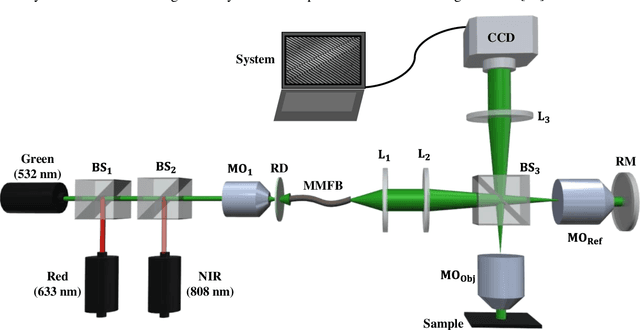
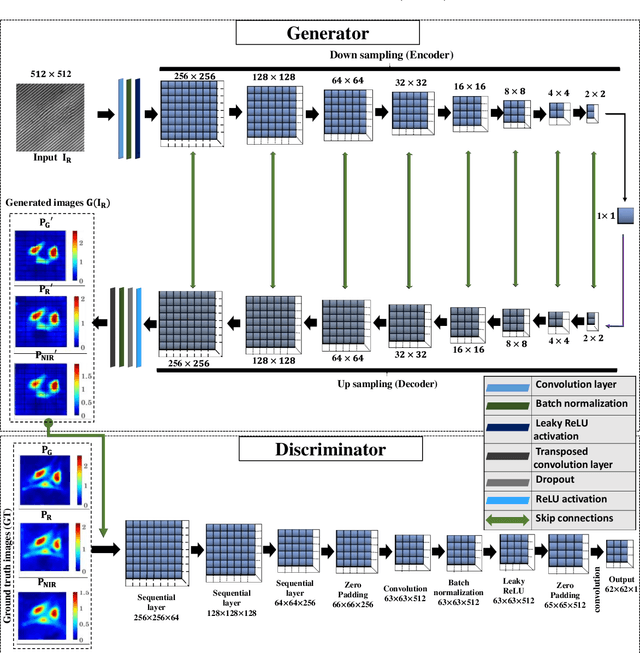
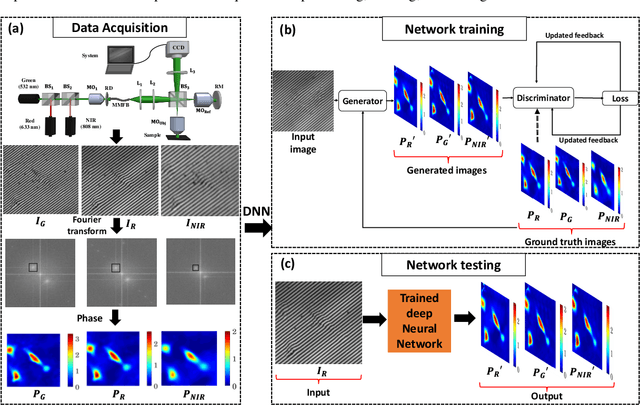

Abstract:Multi-spectral quantitative phase imaging (MS-QPI) is a cutting-edge label-free technique to determine the morphological changes, refractive index variations and spectroscopic information of the specimens. The bottleneck to implement this technique to extract quantitative information, is the need of more than two measurements for generating MS-QPI images. We propose a single-shot MS-QPI technique using highly spatially sensitive digital holographic microscope assisted with deep neural network (DNN). Our method first acquires the interferometric datasets corresponding to multiple wavelengths ({\lambda}=532, 633 and 808 nm used here). The acquired datasets are used to train generative adversarial network (GAN) to generate multi-spectral quantitative phase maps from a single input interferogram. The network is trained and validated on two different samples, the optical waveguide and a MG63 osteosarcoma cells. Further, validation of the framework is performed by comparing the predicted phase maps with experimentally acquired and processed multi-spectral phase maps. The current MS-QPI+DNN framework can further empower spectroscopic QPI to improve the chemical specificity without complex instrumentation and color-cross talk.
Plant Disease Detection Using Image Processing and Machine Learning
Jun 20, 2021



Abstract:One of the important and tedious task in agricultural practices is the detection of the disease on crops. It requires huge time as well as skilled labor. This paper proposes a smart and efficient technique for detection of crop disease which uses computer vision and machine learning techniques. The proposed system is able to detect 20 different diseases of 5 common plants with 93% accuracy.
Art Style Classification with Self-Trained Ensemble of AutoEncoding Transformations
Dec 06, 2020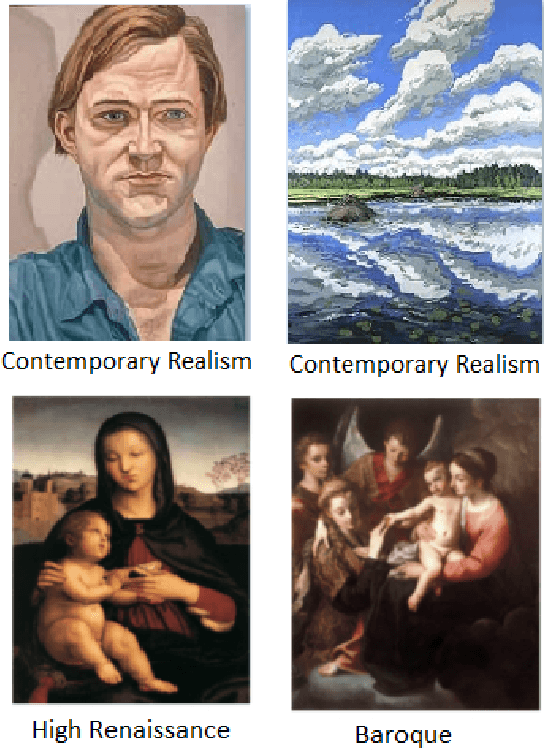
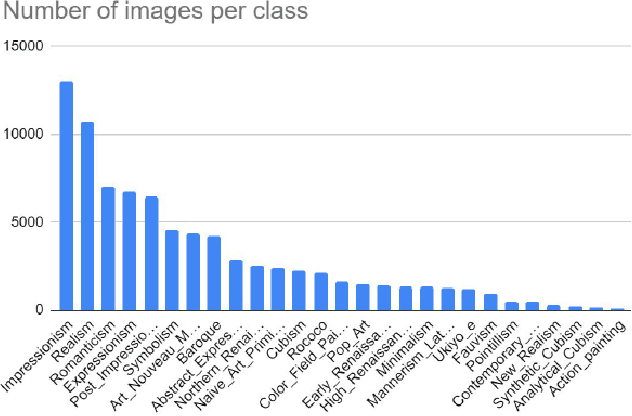
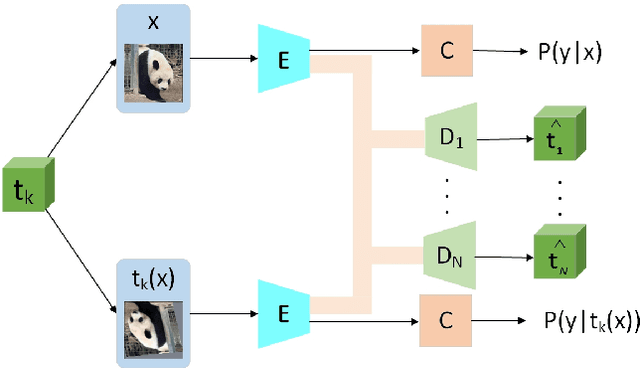
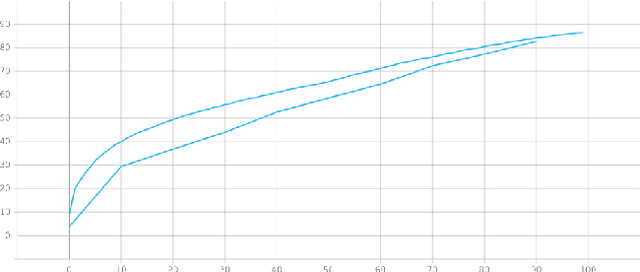
Abstract:The artistic style of a painting is a rich descriptor that reveals both visual and deep intrinsic knowledge about how an artist uniquely portrays and expresses their creative vision. Accurate categorization of paintings across different artistic movements and styles is critical for large-scale indexing of art databases. However, the automatic extraction and recognition of these highly dense artistic features has received little to no attention in the field of computer vision research. In this paper, we investigate the use of deep self-supervised learning methods to solve the problem of recognizing complex artistic styles with high intra-class and low inter-class variation. Further, we outperform existing approaches by almost 20% on a highly class imbalanced WikiArt dataset with 27 art categories. To achieve this, we train the EnAET semi-supervised learning model (Wang et al., 2019) with limited annotated data samples and supplement it with self-supervised representations learned from an ensemble of spatial and non-spatial transformations.
 Add to Chrome
Add to Chrome Add to Firefox
Add to Firefox Add to Edge
Add to Edge